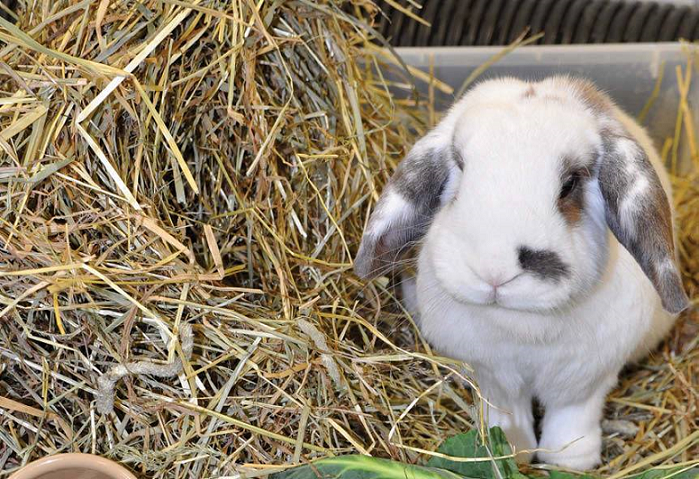Difference between revisions of "Rabbit Medicine and Surgery: Self-Assessment Color Review, Second Edition, Q&A 15"
Jump to navigation
Jump to search
(Created page with "{{CRC Press}} {{Student tip |X = useful for revision.}} <br><br><br> centre <br> '''Meadow and grass hays (see image) are a ver...") |
|||
| Line 21: | Line 21: | ||
</FlashCard> | </FlashCard> | ||
| − | To purchase the full text with your 20% off discount code, go to the [https://www.crcpress.com/9781498730792 CRC Press] Veterinary website | + | To purchase the full text with your 20% off discount code, go to the [https://www.crcpress.com/9781498730792 CRC Press] Veterinary website. |
[[Category:CRC Press flashcards]] | [[Category:CRC Press flashcards]] | ||
Revision as of 11:18, 22 November 2018
| This question was provided by CRC Press. See more case-based flashcards |

|
Student tip: This case is useful for revision. |
Meadow and grass hays (see image) are a very good source of dietary fibre and should make up the bulk of rabbit diets.
| Question | Answer | Article | |
| In relation to rabbit digestive physiology, what do the terms digestible fibre and indigestible fibre refer to? | Fibre is provided by the components of the plant cell walls that are ingested, and it includes cellulose, hemicelluloses, pectins and lignin. Fibre can be divided into digestible/fermentable (soluble) and indigestible (insoluble) components, based on particle size. The digestible fibre refers to the proportion of this material that is directed into the caecum and acts as a substrate for fermentation by the resident microorganisms. In general the digestible fibre is composed of particles that are less than 0.3 mm in size. Indigestible fibre consists of larger particles (>0.35 mm) of plant cell wall material that pass through the GI system without entering the caecum. This type of fibre is mostly made up of lignin and cellulose.
|
Link to Article | |
| Discuss the health benefits of a diet high in indigestible fibre. | A diet high in indigestible fibre encourages natural foraging behaviour and thereby prevents boredom and associated behavioural conditions. It also provides optimal (mainly lateral) mandibular chewing movements and dental wear, stimulates and maintains gut motility, stimulates appetite, and encourages the practice of caecotrophy.
|
Link to Article | |
| Other than hay, what foods provide a source of fibre? | Fresh grass is an excellent source of fibre, as are garden weeds, tree leaves and bark. If such natural sources are unavailable or provided only in limited amounts, a variety of fresh vegetables can provide an additional source of fibre. Most concentrate foods do provide a fibre source; however, the manufacturing process of these feeds can alter the digestibility of the fibre provided.
|
Link to Article | |
To purchase the full text with your 20% off discount code, go to the CRC Press Veterinary website.
